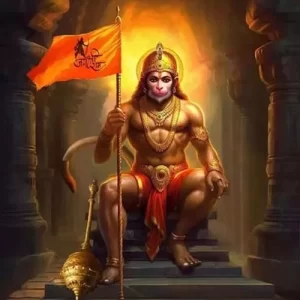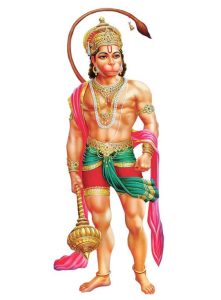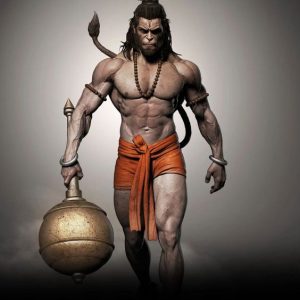Highest Height in the World
Erect and towering, the act of standing tall has perpetually symbolized strength and dominance throughout the intricate fabric of history. Whether it be the colossal figures of myth traversing fantastical landscapes or the tangible titans of our contemporary world, the pursuit of comprehending the towering stature of humanity unfolds as a captivating exploration into the extraordinary domain of human biology and its astonishing extremes. This blog delves into the fascinating world of tallest person on earth, their staggering statures, and the stories behind their existence, taking you on a journey from ancient legends to modern-day marvels. Read More Articles: Snapvista.com
Towering Over History: The Legacy of Gigantic Ancestors
The fascination with the world’s tallest individuals goes beyond mere curiosity, providing a glimpse into the limits of human growth. This phenomenon pushes boundaries, challenging our perception of normalcy and fueling myths and legends throughout history. Ancient folklore spoke of giants whose colossal footprints testified to their existence, from the Cyclopes and Titans of Greek myths to Norse tales featuring giants like the frost giant Ymir.
From Myth to Reality: Charting the Ascent of Record-Breaking Heights

Beyond folklore, recorded history introduces real-life giants who have walked among us. John Rogan, a New Yorker standing at 8 ft 4 in (254 cm), held the title of the world’s tallest man until 1940. However, the mantle was passed to Robert Wadlow from Alton, Illinois, whose staggering height of 8 ft 11.1 in (272 cm) remains unmatched in recorded history. Wadlow’s journey, marked by pituitary gland dysfunction, exemplified resilience, inspiring countless individuals with his courage.
Beyond Brawn: The Human Stories Behind Monumental Heights
These towering figures transcend numerical measurements, offering poignant stories of resilience and acceptance in a world designed for a different scale. Wadlow’s challenges with mobility, clothing, and everyday spaces provide unique insights into living outside the realm of “normal,” yet his perseverance and fulfillment in simple joys leave behind a legacy of acceptance and courage.
The Evolving Landscape: New Contenders for the Tallest Throne
While Wadlow remains the unrivaled champion, modern contenders emerge in the pursuit of the tallest title. Sultan Kösen, a Turkish farmer, currently holds the crown at 8 ft 2.82 in (251 cm), navigating the advantages and challenges of gigantism. His presence underscores the evolving landscape of superlative height, with potential new contenders on the horizon.
Unraveling the Mysteries: Science’s Quest to Explain Giganticism
The quest to understand extraordinary height delves into the mysteries of human biology, with science continually shedding light on the causes and consequences of gigantism. From studying cases like Wadlow’s to developing treatments for growth disorders, scientific advancements play a pivotal role in unraveling the secrets behind monumental heights.
Ethical Crossroads: The Future of Manipulating Human Growth
As medical knowledge progresses, ethical questions arise regarding the potential manipulation of human growth through gene therapies and hormonal regulation techniques. Balancing the pursuit of aesthetic goals with potential health risks demands careful consideration and open dialogue about the ethical implications of altering the fundamental blueprint of human stature.
Beyond Numbers: The Enduring Fascination with Towering Figures
The fascination with the world’s tallest individuals extends beyond scientific inquiry, representing the limits of human potential and challenging our perceptions of what is possible. These towering figures inspire awe at the diversity of the human form and emphasize the importance of empathy and acceptance regardless of physical differences.
Beyond Brawn: The Stories Behind the Stature
The lives of these extraordinary individuals, beyond their tallest height, paint a poignant picture of resilience, adaptation, and acceptance. Their struggles with mobility, clothing, and societal perceptions offer a unique perspective on the challenges of living outside the realm of “normal.”
Reaching New Heights: The Future of Giganticism

Medical advancements hold the potential to reshape the landscape of extreme height. The ongoing evolution of gene therapies and hormonal regulation techniques raises ethical questions about the potential to exceed Wadlow’s record. Exploring the societal and medical repercussions of such advancements prompts a reflection on the future of gigantism.
Unraveling the Mysteries: The Perpetual Fascination with Giants
Our enduring fascination with individuals of extraordinary height goes beyond mere curiosity. Giants symbolize the outer limits of human biology, pushing the boundaries of what we perceive as possible. They challenge our notions of normalcy and evoke wonder at the vast diversity within the human form. Furthermore, the tales of giants serve as poignant reminders of the importance of acceptance and the ability to overcome obstacles, irrespective of our differences.
Unveiling the Mystery: Delving into the Elusive Height of Hanuman
Hanuman, the formidable vanara warrior featured in the Ramayana, epitomizes unwavering devotion, immense strength, and boundless agility. His legendary feats throughout the epic leave readers in awe of his extraordinary capabilities. But one intriguing question often pops up: how tall was Hanuman?
Hanuman, transcending physical limitations, possesses the divine ability to alter his size at will, adapting to the demands of his unwavering loyalty to Rama. Assigning a fixed height to him proves challenging due to his ability to change dimensions. While the Ramayana doesn’t explicitly mention Hanuman’s height, vivid descriptions and metaphors by Valmiki imply his colossal proportions.
An iconic feat involves Hanuman leaping across the vast Indian Ocean to reach Lanka, suggesting an immense size to cover such a distance in a single bound. During his search for Sita, Hanuman transforms into a gigantic form when facing the demoness Surasa, emphasizing his size-shifting ability.
Artistic interpretations in Hindu art depict Hanuman as a towering figure, surpassing human proportions. These representations, while not literal, pay tribute to his immense power and divine nature. However, focusing solely on physical height overlooks the profound symbolism within his character.
Hanuman’s size-shifting symbolizes his boundless devotion, unwavering faith, and limitless potential. His capacity to adapt underscores his ability to overcome challenges and achieve goals through dedication. This skill also emphasizes his selfless service to Rama, prioritizing devotion above personal limitations.
Delving deeper into Hindu mythology, the pantheon of deities and figures offers a fascinating exploration of unique attributes and powers, expanding our understanding of this rich mythological world.
Delving Deeper into the World of Mythology:
Beyond Hanuman, Hindu mythology boasts a fascinating pantheon of deities and figures, each with unique attributes and powers. Let’s explore some of the questions your keywords raise:
- Real Height of Hanuman in Ramayana : As discussed earlier, the Ramayana doesn’t specify Hanuman’s height. Some later versions suggest a possible range of 11 to 40 feet, but his ability to shift size renders such estimations subjective.
- Actual Height of Lord Rama: While Hanuman’s height remains ambiguous, Rama’s stature is described in the Ramayana. Valmiki portrays him as a tall and handsome figure, with some estimations suggesting a height around 8.5 to 9 feet.
- Hanuman ji Height in Feet: Hanuman possesses the ability to alter his height, expanding to the vastness of the universe or shrinking to the size of an atom. Despite this, he is commonly described as standing around 11 feet tall, while Lord Ramchandra is believed to be between 8.5 and 9 feet tall. So Now You Get How Tall is Hanuman is.
What is the Height of Hanuman, the Vanara Hero
Hanuman, the esteemed vanara warrior of the epic Ramayana, stands as a profound symbol of unwavering devotion, extraordinary strength, and boundless energy. The tales recounting his remarkable feats, engraved in the tapestry of Hindu mythology, serve as a timeless source of inspiration for generations. Amidst the awe-inspiring narratives of his courage and agility, a curious question emerges. What was the height of Hanuman?
Hanuman’s Shifting Form in the Ramayana
Unlike mortals bound by physical limitations, Hanuman transcends the realm of earthly definitions. The Ramayana, the primary source of his legend, doesn’t explicitly mention his specific height. This ambiguity fuels the intrigue and paves the way for diverse interpretations.
Divine Metamorphosis: The Power of Mahima
The Ramayana describes Hanuman as possessing the Mahima Siddhi, the power to alter his size and form at will. This divine ability allows him to transform from a tiny monkey to a colossal figure, towering over mountains and effortlessly bridging vast distances.
Scaling the Heights of Legend: Depictions of Hanuman’s Stature

Artistic representations of Hanuman throughout history offer glimpses into his perceived size. Murals, sculptures, and paintings often portray him as a muscular humanoid figure, significantly taller than ordinary humans. Some depictions show him dwarfing mountains, highlighting his ability to transcend earthly limitations.
A Spectrum of Interpretations: Scholarly Insights on Hanuman’s Height
Scholars and theologians have proposed various interpretations of Hanuman’s size based on textual clues and symbolic meanings. Some suggest he could be around 11 feet tall in his natural form, while others believe he could morph into gigantic proportions when the situation demanded.
Beyond Physical Dimensions: The Significance of Hanuman’s Size
The focus on Hanuman’s height isn’t merely about satisfying curiosity. It delves into the core of his identity and the symbolic interpretations associated with his form. His ability to expand and contract reflects his boundless potential, his unwavering devotion to his purpose, and his connection to the divine realm.
Hanuman vs. Rama: A Comparative Perspective
The Ramayana also mentions Lord Rama’s height, described as around 8.5 to 9 feet. This comparative detail further emphasizes Hanuman’s extraordinary stature, highlighting his role as a superhuman being with exceptional abilities.
Hanuman vs. Other Deities: The Pantheon of Heights
Within the vast pantheon of Hindu gods and goddesses, various figures possess awe-inspiring physical attributes. Vishnu, the preserver god, is often depicted as a cosmic being of infinite size. Shiva, the god of destruction and regeneration, is sometimes portrayed as towering over mountains. However, Hanuman’s unique ability to dynamically alter his form sets him apart, making him a true enigma in terms of physical dimensions.
From Mahabharata to Modern Marvels: Echoes of Hanuman’s Grandeur
The influence of Hanuman’s stature extends beyond the Ramayana. In the Mahabharata, he appears before Bhima in a form equal to the Vindhya mountains, showcasing his ability to adapt to his surroundings. Even in modern times, superhero narratives like those of the Hulk and Ant-Man draw inspiration from the concept of size-shifting, echoing the legacy of Hanuman’s transformative power.
Hanuman’s height compared to other figures:
- Lord Rama: Though not explicitly mentioned, some interpretations suggest Rama was around 8.5 to 9 feet tall, making Hanuman a significantly larger figure.
- Tallest God in the World: Determining the “tallest God” is subjective and depends on interpretations and artistic depictions. In Hindu mythology, Vishnu in his cosmic form of Narayana is often portrayed as immense, encompassing the universe. The world’s tallest Hanuman statue also holds the title for the largest and tallest bust globally, crafted from an impressive 500 tons of steel
- Tallest man on Earth: The title of the tallest man on Earth in the Mahabharata is not explicitly attributed to any specific character. However, Bhima, one of the Pandava brothers, is known for his exceptional strength and stature.
What was the Real Height of Lord Hanuman

Lord Hanuman’s height in Hindu mythology is not constrained to a singular measurement, as he possesses the divine ability to alter his size at will. This extraordinary power, known as “Mahima Siddhi,” enables him to adjust his form based on the demands of the situation. Consequently, determining his “true” height remains open to interpretation, with variations depending on the context of the narrative.
Various perspectives on Hanuman’s height exist:
- Variable Dimensions: Texts such as the Ramayana and Mahabharata depict him assuming a range of sizes, from as diminutive as a thumb to as colossal as a mountain.
- Symbolic Significance: His ability to change size underscores his potency and adaptability, serving as a symbolic representation of his capability to surmount any challenge.
- Infinite Magnitude: Some interpretations propose that Hanuman’s size can infinitely expand, mirroring the boundless nature of his unwavering devotion and formidable strength. In this view, the height of Lord Hanuman is considered infinite.
Who is Tallest God in the World
Tallest God by Physical Statue:
The title for the tallest statue depicting a deity currently belongs to the Garuda Wisnu Kencana statue in Bali, Indonesia. Soaring at 400.3 feet (122 meters) tall, including the pedestal, this imposing structure depicts the Hindu god Vishnu riding his mythical bird, Garuda.
Tallest God by Religious Importance:
When considering the God with the greatest stature or importance within a particular religion, opinions vary based on faith and interpretation. Some deities commonly regarded as supreme include Brahman in Hinduism, Yahweh in Judaism and Christianity, Allah in Islam, and Ahura Mazda in Zoroastrianism. The concept of the “tallest God” is subjective, rooted in personal belief and perspective.
The Enduring Mystery: Embracing the Unknown
The exact height of Hanuman remains a captivating mystery. Embracing this ambiguity allows for a deeper exploration of the symbolic essence of his character, appreciating his divine nature and limitless potential.
Beyond the Numbers: Hanuman’s True Grandeur
Focusing solely on Hanuman’s physical size risks diminishing his true significance. His legend transcends earthly measurements, embodying devotion, courage, and unwavering faith. Hanuman’s ability to overcome obstacles serves as a timeless reminder of the boundless potential within each individual.
Embracing the Journey: Exploring the Many Facets of Hanuman

This blog serves as a starting point for exploring Hanuman’s multifaceted character. Delve into the rich tapestry of the Ramayana and other Hindu scriptures to discover countless stories that illuminate his wisdom, strength, and unwavering loyalty. Hanuman’s true greatness lies not in physical dimensions but in the profound impact he continues to have on the hearts and minds of devotees worldwide.
The Tallest God in Hindu Mythology
In the vast tapestry of Hindu mythology, the gods and goddesses stand as towering figures, each with their unique attributes and significance. Among them, there is a celestial entity who is often regarded as the epitome of height and grandeur. Join us on a journey to discover “Who is the Tallest God in Hindu Mythology?”
Exploring the Heights of Divinity
Within the rich tapestry of the Hindu pantheon, a plethora of deities are venerated for their divine attributes. However, when it comes to sheer grandeur, one god ascends above all others. The intriguing question that captures the imagination is: Which is the Tallest God on Earth?
Unveiling the Cosmic Mystery
In the expansive realm of Hinduism, Lord Vishnu, the Preserver, stands as a towering figure, both metaphorically and, according to some beliefs, literally. His divine manifestation, often depicted with four arms, holds the key to cosmic equilibrium. According to ancient scriptures, Vishnu assumed the colossal avatar of Lord Vishvarupa during a significant event in the epic Mahabharata.
Lord Vishvarupa: The Cosmic Giant
Tallest God in Hindu Mythology
In the Mahabharata, an ancient Indian epic, Lord Vishvarupa reveals his cosmic form to Prince Arjuna, establishing Vishnu as the tallest god in Hindu mythology. This transcendent manifestation depicts the vastness of the divine and symbolizes the omnipresence and omnipotence of Vishnu.
Widely recognized as the “Tallest God in Hinduism,” Vishnu’s Vishvarupa form encompasses the entire universe, showcasing the divine order. This portrayal makes Vishnu the tallest god not only in Hinduism but also in the world, as it uniquely symbolizes the vastness of the cosmos.
In contrast to other mythologies with colossal gods, the Vishvarupa manifestation stands out as a distinctive representation of the tallest god globally. Its significance goes beyond mythology, sparking curiosity and fascination in contemporary discussions about the tallest god on Earth.
The echoes of these ancient tales continue to resonate in the modern world, making the question of the tallest god a topic that transcends cultural and religious boundaries.
Which is the Tallest Man on the Earth in Mahabharata?
The Mahabharata, an ancient Indian epic, intricately weaves together cosmic dimensions of gods and the tales of legendary human characters. Among these, Bhishma Pitamah stands out, celebrated for his exceptional height and prowess. His towering presence is not merely physical; it symbolizes his unwavering commitment to duty and sacrificial nature, elevating him both figuratively and literally in the narrative.
Conclusion
Hanuman, though not bound by a fixed physical stature, becomes a canvas for our imagination in Hindu mythology. His height is a testament to his divine nature, boundless potential, and unwavering devotion. Contemplating his enigmatic stature serves as a reminder that true greatness transcends physical dimensions. Instead, it lies in the strength of our spirit, the relentless pursuit of purpose, and the boundless potential inherent within each individual.
FAQs
- What is the highest natural point on Earth?
The highest natural point on Earth is the summit of Mount Everest, towering at 29,032 feet (8,848 meters) above sea level.
- Which man-made structure holds the record for the highest elevation?
The Burj Khalifa in Dubai, United Arab Emirates, currently holds the record as the tallest man-made structure, reaching a height of 2,717 feet (828 meters).
- How does the elevation of Mount Everest compare to other notable peaks?
Mount Everest claims the title of the world’s highest peak, surpassing formidable mountains like K2, Kangchenjunga, and Lhotse within the Himalayan range.
- What challenges do climbers face when ascending to high altitudes?
Climbers tackling high altitudes confront various challenges, including extreme weather conditions, low oxygen levels, physical exhaustion, and the risk of altitude-related illnesses such as acute mountain sickness. These ascents demand both physical and mental resilience.
- What impact does human activity at high elevations have on the environment?
Human activity in mountainous regions, especially at high elevations, can result in environmental degradation, including soil erosion, disruption of fragile ecosystems, and the accumulation of waste. Adopting sustainable practices and promoting responsible tourism becomes imperative to mitigate these impacts and preserve pristine environments for future generations.
